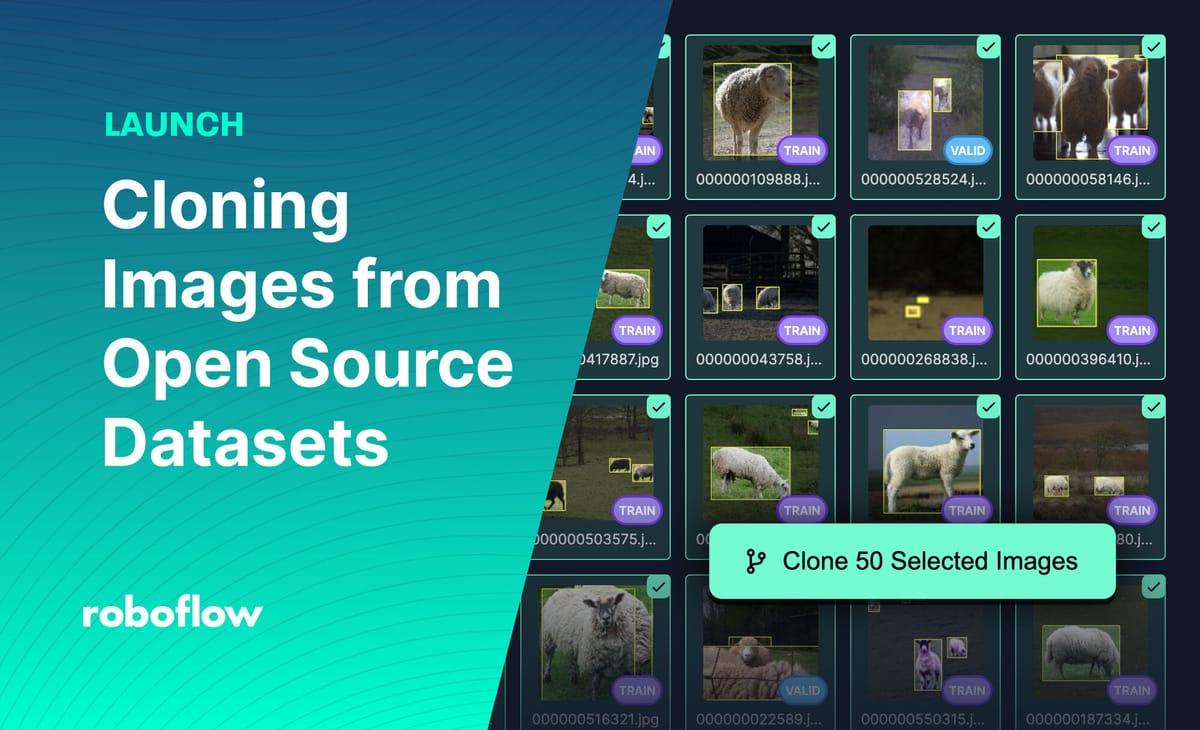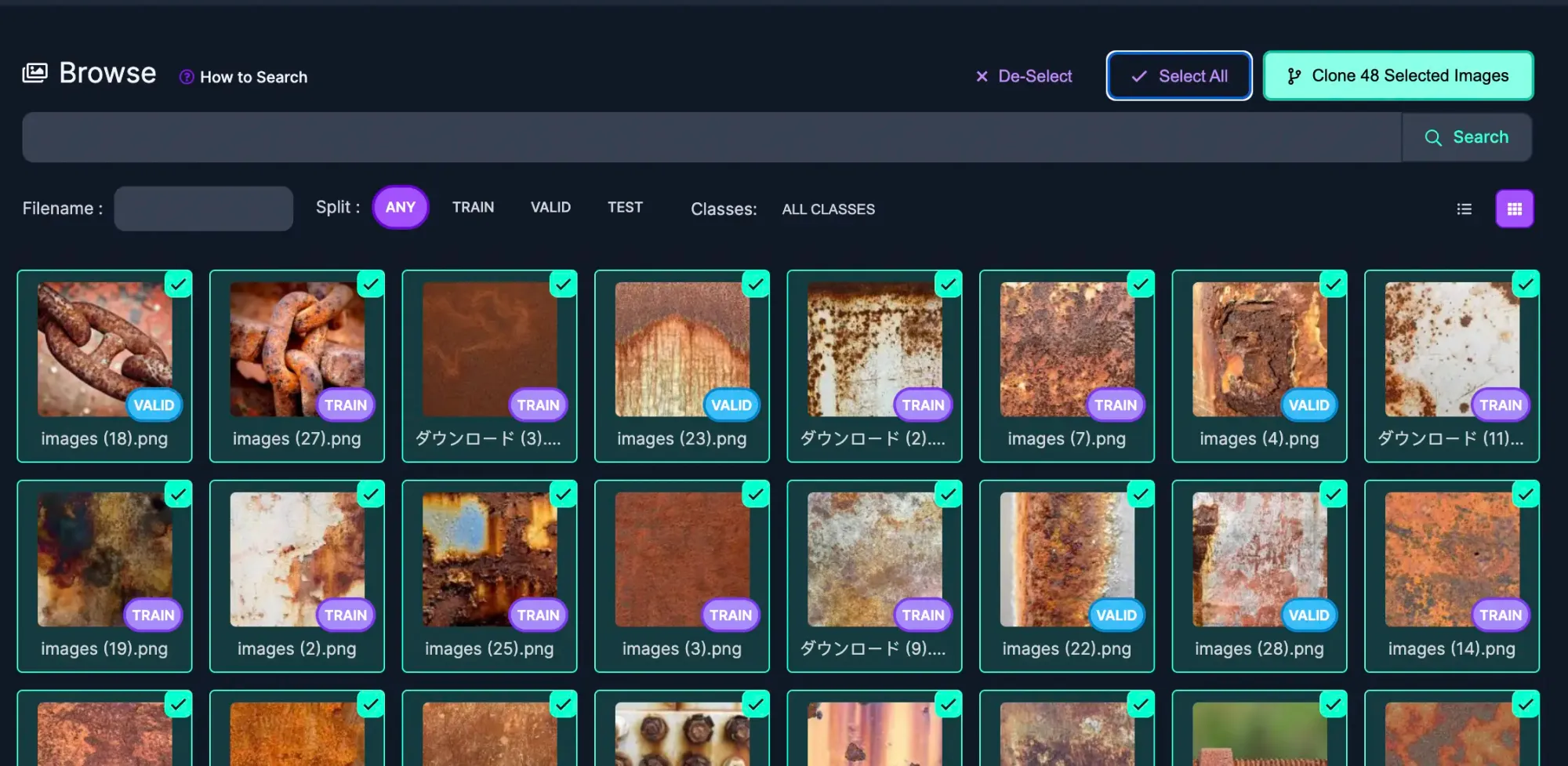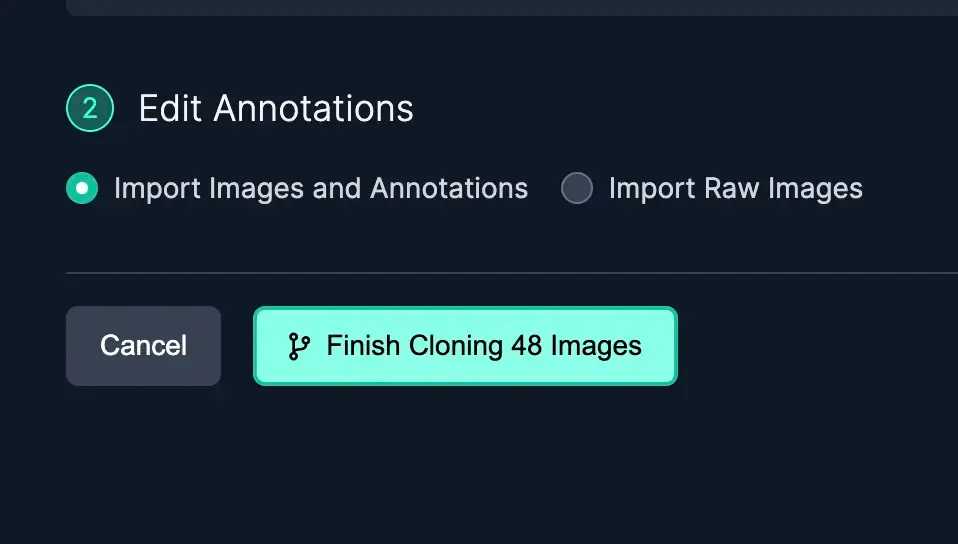
Since its launch in August 2021, Roboflow Universe has become the largest collection of open source datasets and pre-trained computer vision models. Our goal is to democratize access to computer vision and when it comes to building vision applications, gathering data for training vision models is extremely time consuming.
Starting today, you can clone any of the 100+ million open source images in Roboflow Universe and add them into your Roboflow account.
Whether building a dataset from scratch, sampling images to improve model performance on specific objects, or generating a model to use model-assisted labeling, you can quickly build or augment a dataset in minutes.
Clone Images to Your Roboflow Project
Once you have created a new Project in your Roboflow account, head to Roboflow Universe and use Dataset Search to find projects with images that will work for your use case.
When you find a Project with images and/or annotations that work for you, open the Images page and select images to clone. You can select individual images by mousing over the image and clicking the checkbox in the upper right corner of the image. To bulk add images, you can click Select All to clone all images visible in the current results page.

After selecting images you want to clone into your project, click Clone Images and choose the Workspace that contains the Project.

Select the Workspace and then choose the Project to add the images to the Dataset.

When cloning the images into your Project, you can import the images with, or without, the annotations. As you clone images into your dataset, images with augmentations will not be included and you'll be able to apply your own augmentations when you generate a dataset.

Importing raw images (images without annotations) is a helpful option when:
- You find images that contain the object you're interested in but the annotations may not be focused on the object you plan to train your model to identify
- You find a classification dataset but your project requires bounding boxes
- You want to use polygon annotations but the project has bounding boxes
No need to be Roboflow will check to see if you are attempting to add any images that already exist in the Project and you won't be able to add duplicate images.
Advanced Tips to Find the Data You Need
Use Dataset Search to find exactly the data you need to fine tune your model. As an example, if our rust detection model was struggling with detecting rust on pipes, we will want to find more images of pipes to add the dataset. Rich semantic search in Projects and broadly in Roboflow Universe can be used to find the niche data you need.
Using Dataset Search within research datasets can help you quickly collect a high number of fairly well labeled data to help kickstart a model.
Another way to find specific data is by using the Health Check page and clicking on a specific class. This will bring you to the Images page with that class filtered to the top of the results.
If you can't find the data you need in Roboflow Universe, you can always upload your own data via API or use Youtube videos as training data.
Start Cloning Images to Your Project
With over 100 million open source images, and more being added each day, Roboflow Universe can be a useful tool as you work on building computer vision applications. And if you are finding the open source datasets helpful, please make sure to share your project in Roboflow Universe as well!
Cite this Post
Use the following entry to cite this post in your research:
Trevor Lynn. (Oct 14, 2022). Launch: Cloning Images from Open Source Datasets. Roboflow Blog: https://blog.roboflow.com/use-open-source-computer-vision-datasets/
Discuss this Post
If you have any questions about this blog post, start a discussion on the Roboflow Forum.
